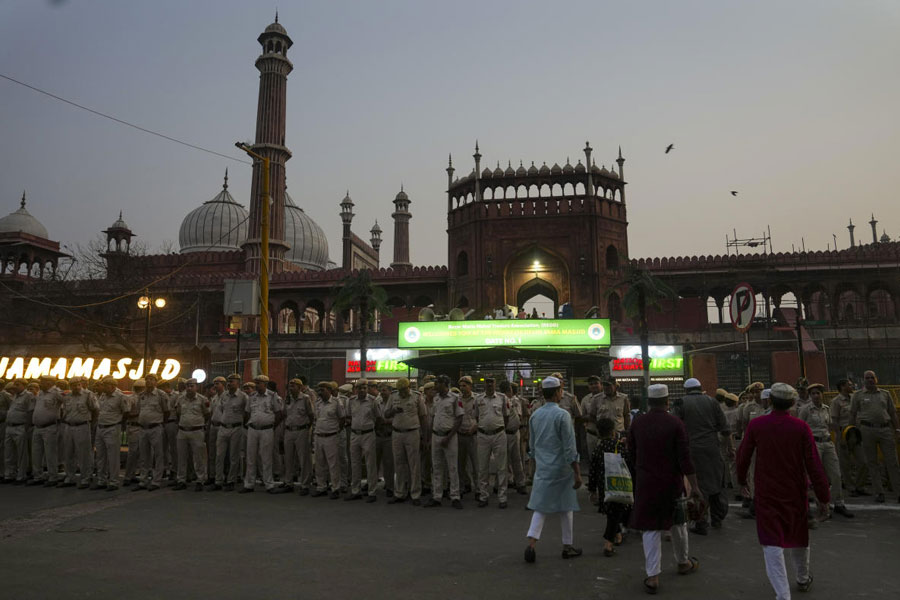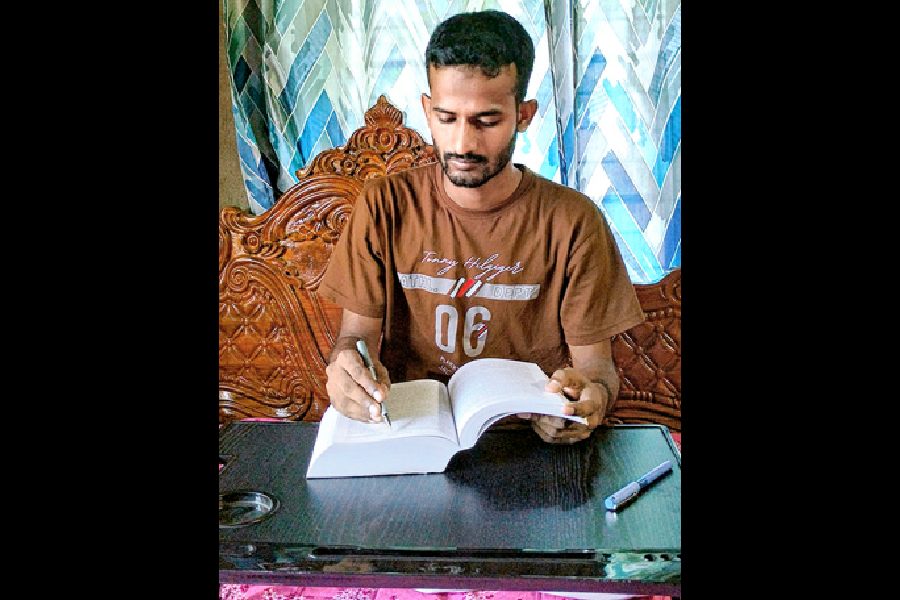 |
| The 440-year-old Khatara satra is an important landmark in Sipajhar. Telegraph picture |
A unique folk culture and a century-old legacy of sacrifice give Sipajhar its pride and identity. But other than this, this constituency in Darrang district has little else to boast of as it goes to the hustings on Monday.
With 80 per cent of the populace still living below the poverty line and almost no development on any front, the expectations of the people, 95 per cent of whom are indigenous, have been badly let down by successive governments.
“Sipajhar is the place of origin of a rich Darrangi folk culture but it is yet to get political patronage for preservation and development,” said 89-year-old Lalit Chandra Nath Oja, a renowned folk artiste and a Sangeet Natak Akademi award winner.
He said it was because of the indifference of politicians that the rich culture of Darrang had been neglected.
Oja said there has been some improvement in Sipajhar in the last five years but it was not sufficient. The problems of infrastructure, education, unemployment, uplift of the socio-economically backward class and needs of peasants such as communication, irrigation, repair of embankments, flood and health ought to be addressed urgently.
He said the aspirations of the people of the constituency, mostly farmers, had been denied with the Centre not even according recognition to Patharughat, where 140 farmers had sacrificed their lives during the 1894 peasants’ revolt against the British.
On the perimeter of Sipajhar lies Bamunjhar, a remote village whose 1,500 residents are suffering from a unique identity crisis. Their village is listed in Udalguri district, has voting rights for Sipajhar seat in Darrang district and the villagers have to go to Goreswar in Baksa for development work.
“The whole thing is very confusing,” said Purna Kanta Mahanta, a senior citizen of the village. He said the villagers have decided to boycott the Assembly elections in protest against the inclusion of their village, which has a negligible population of Bodos, in the Bodoland Council Areas District (BTAD). “There are only 312 persons from the Bodo community in this village,” he said.
A stronghold of the AGP since the Assam Agitation, Sipajhar returned the party’s candidate Zoii Nath Sarma for four consecutive terms since 1985 before giving its mandate to a young student leader and Congress candidate Binanda Kumar Saikia in 2006.
While Saikia is the Congress candidate again, the AGP has fielded a new face, Mukut Sarma, a young social worker. A resentful Zoii Nath Sarma has decided to go it alone. Zoii Nath’s stand is likely to impact the AGP’s chances which may witness a division of votes with many supporting the former two-time minister. Zoii Nath has been campaigning against the AGP, the Congress and the BJP, raising the issue of lack of development during Saikia’s tenure as well as corruption.
Corruption, development and steps to establish the Patharughat peasant uprising at the national level are also Mukut’s campaign plank.
Saikia, meanwhile, is highlighting his achievements — uplift of the rural economy, irrigation schemes, tackling floods and his vision of a knowledge-based society. However, two things might just upset his applecart: anti-incumbency and dissidence over his candidature.
The BJP has fielded Kuladhar Saharia, former chairman of Brahmaputra Board, Assam. He has a following here and had started his campaign with the slogan “Shining Sipajhar”.











